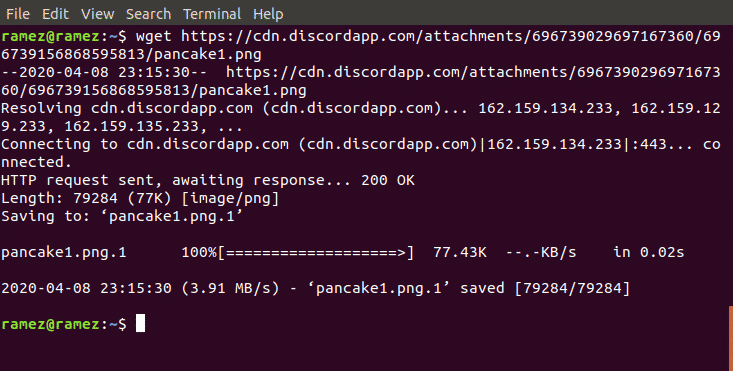

- DOWNLOADING CMAKE LINUX COMMAND LINE HOW TO
- DOWNLOADING CMAKE LINUX COMMAND LINE INSTALL
- DOWNLOADING CMAKE LINUX COMMAND LINE SOFTWARE
- DOWNLOADING CMAKE LINUX COMMAND LINE CODE
We modify CMakeLists.txt to cmake_minimum_required(VERSION 2.4) Instead of building from multiple source files, we can first deploy foo.cpp as a library by using add_library() and afterwards linking it with the main program with target_link_libraries(). Say we have the same set of source/header files as in the example.
DOWNLOADING CMAKE LINUX COMMAND LINE HOW TO
This example shows how to deploy the "Hello World" program as a library and how to link it with other targets. Each only handles as much of the build as is present in the current directory.įor official resources on CMake, see CMake's Documentation and Tutorial. The final CMakeLists files can be very clear and straightforward, because each is so limited in scope. Locate a library which is somewhere in the source tree.Generate a file, based on the specific build configuration.Define variables that the buildsystem will use in this directory, and in its subdirectories.

Add a filepath to the include-path used during build.Build a library or an executable out of some of the source files in this directory.It also defines which subdirectories CMake should handle as well. Each directory's CMakeLists file defines what the buildsystem should do in that specific directory. On Linux, CMake generates Makefiles on Windows, it can generate Visual Studio projects, and so on.īuild behavior is defined in CMakeLists.txt files - one in every directory of the source code. It accomplishes this by pairing with different platform-specific buildsystems CMake is an intermediate step, that generates build input for different specific platforms.
DOWNLOADING CMAKE LINUX COMMAND LINE CODE
Helloworld: $ cd helloworld $ touch makefile $ vi makefile # create the makefile as below $ make g++ -o hello helloworld.CMake is a tool for defining and managing code builds, primarily for C++.ĬMake is a cross-platform tool the idea is to have a single definition of how the project is built - which translates into specific build definitions for any supported platform. That’s why GNU also provides an automation tool - GNU Make.Ī simple makefile consists of rules with the following syntax: target. With large C++ projects - which can involve thousands of separate files, including source files, object files, libraries, and executables - building from the command line is a hard task. phone The list software: Gmail GoogleMap The list hardware Camera Screen Building C++ App by makefile
DOWNLOADING CMAKE LINUX COMMAND LINE INSTALL
dynamiclib/libsoftware.dylib # remember copy dynamic library to executable file or install in in directory where the system can read it. dynamiclib/include # linking the application with static and dynamic library $ g++ -o phone phone.o -L./staticlib -L./dynamiclib -lhardware -lsoftware Or $ g++ -o phone phone.o. Static library: $ cd staticlib # Compile source file to object without linking # -c: Only run preprocess, compile, and assemble steps (without linking) # -I: Add directory to include search path $ g++ -c -o camera.o src/camera.cpp -I include/hardware $ g++ -c -o screen.o src/screen.cpp -I include/hardware $ g++ -c -o hardware.o src/hardware.cpp -I include/hardware # Link the object files into a static library $ ar ru libhardware.a screen.o camera.o hardware.o $ ranlib libhardware.aĭynamic library: $ cd dynamiclib # Compile source file to object without linking $ g++ -c -o gmail.o src/gmail.cpp -I include/software $ g++ -c -o googlemap.o src/googlemap.cpp -I include/software $ g++ -c -o software.o src/software.cpp -I include/software # create dynamic library $ g++ -shared -fPIC -o libsoftware.dylib gmail.o googlemap.o software.oĪn executable: $ cd phone # Compile source file to object without linking $ g++ -c -o phone.o phone.cpp -I. Simple! right? Now let’s try a more complex application including static library and dynamic library: Helloworld: Let’s start with helloworld example: $ cd helloworld # -o : output file $ g++ -o hello helloworld.cpp $ ls hello helloworld.cpp $.

DOWNLOADING CMAKE LINUX COMMAND LINE SOFTWARE
├── helloworld │ └── helloworld.cpp ├── phone │ └── phone.cpp ├── dynamiclib │ ├── include │ │ └── software │ │ ├── gmail.hpp │ │ ├── googlemap.hpp │ │ └── software.hpp │ └── src │ ├── gmail.cpp │ ├── googlemap.cpp │ └── software.cpp └── staticlib ├── include │ └── hardware │ ├── camera.hpp │ ├── hardware.hpp │ └── screen.hpp └── src ├── camera.cpp ├── hardware.cpp └── screen.cpp Building C++ App by Command Line To understand the build process, I’ve made a project which has four modules: a simple executable helloworld, a static library, a dynamic library, and an executable.


 0 kommentar(er)
0 kommentar(er)
